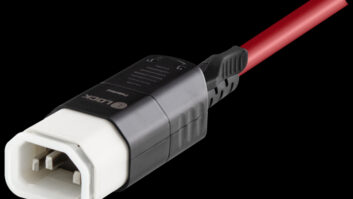We’ve all experienced it: sitting in a conference room or huddle space, struggling to make out important information through stilted voices, unintelligible speech, echoes, reverb, voices fading in and out, and variations in loudness from one voice to the next. We’re tired at the end of the call, but we don’t know why. The answer is audio fatigue, and it’s a very real phenomenon that happens because we have to work hard to make sense of what we’re hearing. String together several calls in a day, which is typical for many executives, and it really wears you down.
Research shows that active listening takes a physical toll on the body. Just like when we have to listen extra carefully to someone who speaks with an unfamiliar accent, our brains have to work harder to distinguish sounds when they’re coming to us only with lower frequencies, such as through a speakerphone (analog or using old codecs) or a mobile phone. “Shoes” can sound like “choose.” “Paint” can sound like “faint.”
On the flip side, adding in higher frequencies to the signal makes it easier to differentiate sounds and therefore requires less brain power. Some manufacturers of communications equipment have taken that fact into account and are designing products that can help prevent audio fatigue by improving audio fidelity.
For example, traditional analog telephony solutions (POTS) use 4kHz bandwidth, but now that telephone communication is going digital, we’re seeing an increase in the use of wideband audio and higher-fidelity codecs for connections. (Skype was the original driver of this trend, having built 7kHz of fidelity—twice as much as the typical narrowband—into its service before anyone else.) The cell phone industry has begun building wideband audio into its products, as well, and we expect to see these phones coming to market in the next three years. Meanwhile, today’s ultra-wideband solutions use advanced formats such as the Opus codec to offer very rich 16kHz fidelity. This degree of fidelity boosts the intelligibility factor significantly across all variety of languages.
Other manufacturers are incorporating full-duplex and acoustic echo cancellation technology into their speakerphones, which means all parties in the conversation can communicate at once, and the system will sift out noise and echoes. Unlike half-duplex systems, which shut down all microphones except for the person who is speaking, full-duplex systems build in processing specifically to allow simultaneous communication, so individuals can speak at will, and the overlapping speech will be heard.
Another important feature is automatic gain control, which helps balance out the difference in loudness of the various speakers around a speakerphone. For example, someone who is 10ft. away from the microphone will sound just as loud as someone who is sitting right in front of it.
Audio fatigue can lurk in the background, affecting a team’s alertness and even its productivity, but you can combat audio fatigue with high-quality equipment and connections. When looking at speakerphone or audio solutions, look for products that have ultra-wideband technology for the most intelligible speech, automatic gain control, and noise suppression to help reduce background noise, and full-duplex telephony with echo cancellation for the richest, most natural experience possible.
Tim Root is CTO and executive vice president of new business development for Revolabs, a leading provider of audio solutions for unified communications, enterprise collaboration, and professional audio applications. He can be reached at [email protected].









